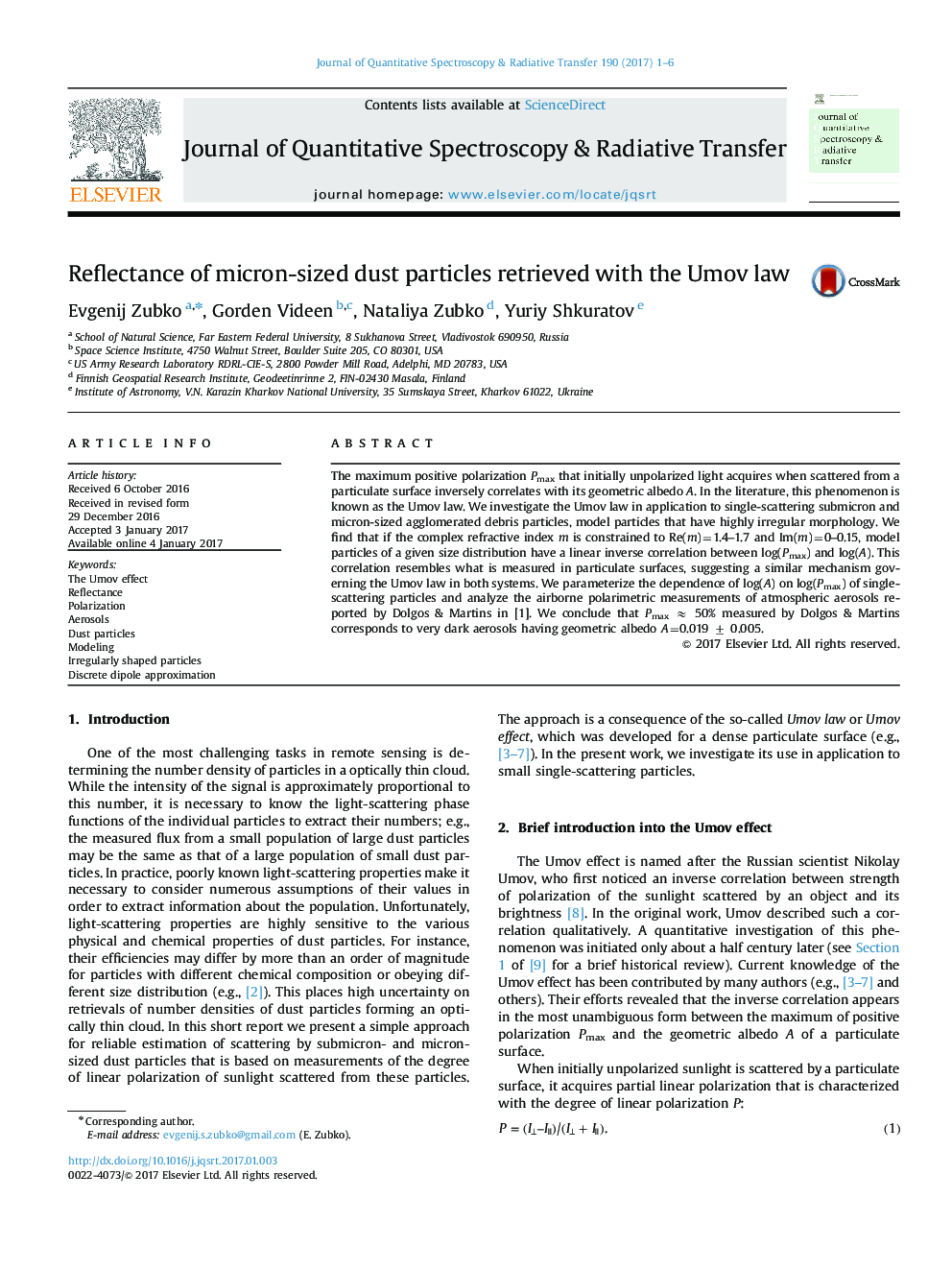| Article ID | Journal | Published Year | Pages | File Type |
|---|---|---|---|---|
| 5427247 | Journal of Quantitative Spectroscopy and Radiative Transfer | 2017 | 6 Pages |
â¢Umov law - inverse correlation of reflectance and polarization of scattered light.â¢Using DDA, we study the Umov law in single-scattering agglomerated debris particles.â¢Single-scattering particles obey the Umov law over a wide range of refractive indices.â¢In situ polarimetric measurements of ambient aerosols are analyzed using the Umov law.â¢An extremely low geometric albedo A=(1.9 ± 0.5)% is retrieved in aerosol particles.
The maximum positive polarization Pmax that initially unpolarized light acquires when scattered from a particulate surface inversely correlates with its geometric albedo A. In the literature, this phenomenon is known as the Umov law. We investigate the Umov law in application to single-scattering submicron and micron-sized agglomerated debris particles, model particles that have highly irregular morphology. We find that if the complex refractive index m is constrained to Re(m)=1.4-1.7 and Im(m)=0-0.15, model particles of a given size distribution have a linear inverse correlation between log(Pmax) and log(A). This correlation resembles what is measured in particulate surfaces, suggesting a similar mechanism governing the Umov law in both systems. We parameterize the dependence of log(A) on log(Pmax) of single-scattering particles and analyze the airborne polarimetric measurements of atmospheric aerosols reported by Dolgos & Martins in [1]. We conclude that Pmax â 50% measured by Dolgos & Martins corresponds to very dark aerosols having geometric albedo A=0.019 ± 0.005.
